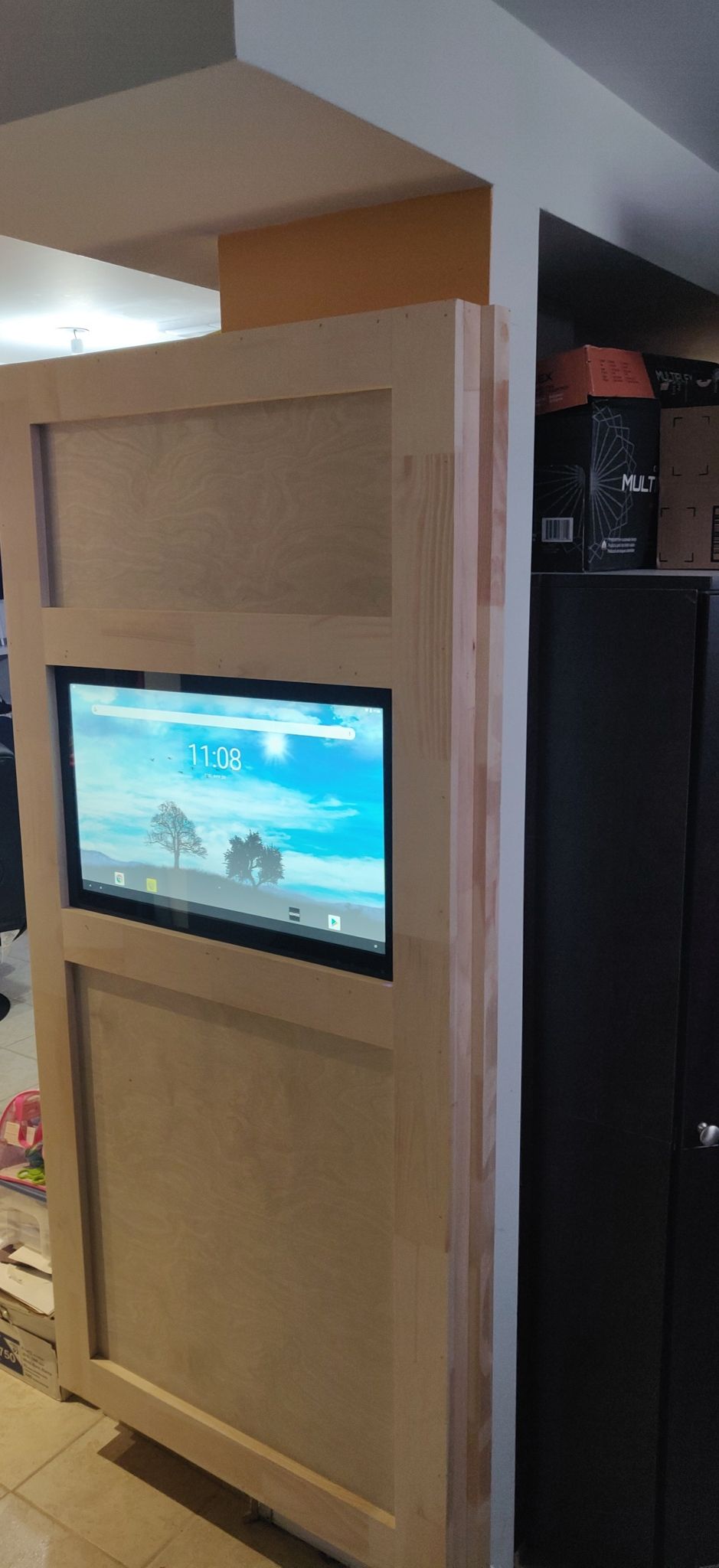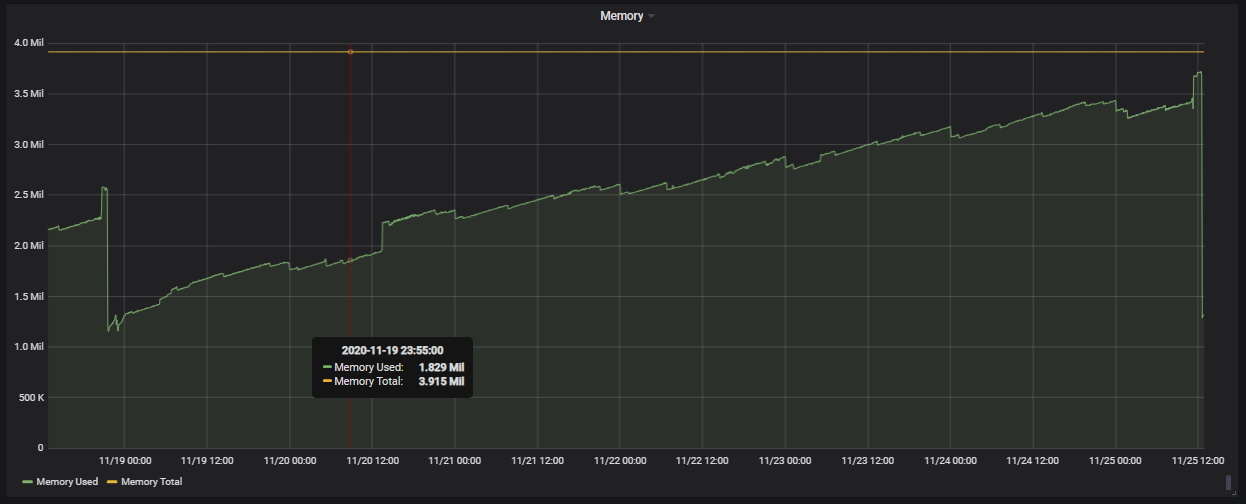Another transition from Vera to OpenLuup And now to HASS - PerH
-
Thanks, I'll take my chances that noone with do a hostile takeover on my living room lights.

Noticed that i have some "system error" and "Heat alarms" that is triggered on some switches/dimmers, dimmers that are running 10 watts.. no visible problems with them, so i wonder why? When will they reset?
I'd like to decipher these to full sentences, as the codes' meaning are explained in the manual.. any way to give the code to i.e. Reactor?
-
Thanks, I'll take my chances that noone with do a hostile takeover on my living room lights.

Noticed that i have some "system error" and "Heat alarms" that is triggered on some switches/dimmers, dimmers that are running 10 watts.. no visible problems with them, so i wonder why? When will they reset?
I'd like to decipher these to full sentences, as the codes' meaning are explained in the manual.. any way to give the code to i.e. Reactor?
@PerH said in Another transition from Vera to OpenLuup - PerH:
I'd like to decipher these to full sentences, as the codes' meaning are explained in the manual.. any way to give the code to i.e. Reactor?
If they’re available to the API that the ZWay plugin uses, then this should be possible. There is already a module in openLuup which is used for fixed text lookups (mime types, HTTP error code, ....)
-
I went ahead and gave it a shot. Can't really see any better ways to zigbee in openluup right now.. Vera is hopeless, ezlo plus equally hopeless (probably for years), HASS has no real bridge for interaction.. Have you looked at domoticz? That at least has a bridge plugin available?
-
domoticz is similar to home assistant on the zwave side since it uses the openzwave library as its zwave controller. It is not nearly as developed as Home Assistant though and yes I installed it to play with it at one point thinking about using the existing bridge but decided, given the fact that I have only a dozen devices to bridge over, to skip the bridge and just to call the Home Assistant API manually.
-
I went ahead and gave it a shot. Can't really see any better ways to zigbee in openluup right now.. Vera is hopeless, ezlo plus equally hopeless (probably for years), HASS has no real bridge for interaction.. Have you looked at domoticz? That at least has a bridge plugin available?
@PerH said in Another transition from Vera to OpenLuup - PerH:
Can't really see any better ways to zigbee in openluup right now..
the best solution is to write a bridge for deconz. I started to take a look at the docs, lately. https://github.com/dresden-elektronik/deconz-rest-plugin
The responses are remarkably like the Hue server's one. This is an extremely easy to integrate protocol format.http://dresden-elektronik.github.io/deconz-rest-doc/lights/
http://dresden-elektronik.github.io/deconz-rest-doc/sensors/There's also a WebSocket implementation, so real time updates instead of polling should be possible.
I've not invested into ZigBee beside a couple of Hue ligths and I'm ok with their hub (mostly because it's the only way to update the firmware), but I'm toying with this idea. In my mind, this should equally work on both Vera and openLuup.
-
Sounds promising!
It would be a good thing to get access to the more broadly used code out there, it doesn't look like ZiGate is very much used at the moment..
I would like to be able to help with some coding too, but always runs into a wall trying to figure out the layer hirearchy in lua/luup/java etc..In my world, there was a fierce battle yesterday.. The RFXtrx plugin (maybe in collusion with openluup) decided to delete my 40 devices, and preventing me from setting them back up by deleting the child device list twice..
I ended up deleting all RFX files, and installing an older version (1.41). Much better! Auto-create works, I can use sensors with the correct device files, not just as binary lights..When this finally was sorted, i discovered that all z-wave devices was gone after a reboot. looking in z-wave smarthome UI, they were gone as well! just the main devices, no child devices.
No error messages anywhere. I restarted z-wayserver.service, and things fortunately came back.. -
Sounds promising!
It would be a good thing to get access to the more broadly used code out there, it doesn't look like ZiGate is very much used at the moment..
I would like to be able to help with some coding too, but always runs into a wall trying to figure out the layer hirearchy in lua/luup/java etc..In my world, there was a fierce battle yesterday.. The RFXtrx plugin (maybe in collusion with openluup) decided to delete my 40 devices, and preventing me from setting them back up by deleting the child device list twice..
I ended up deleting all RFX files, and installing an older version (1.41). Much better! Auto-create works, I can use sensors with the correct device files, not just as binary lights..When this finally was sorted, i discovered that all z-wave devices was gone after a reboot. looking in z-wave smarthome UI, they were gone as well! just the main devices, no child devices.
No error messages anywhere. I restarted z-wayserver.service, and things fortunately came back..Has anyone looked at Zigbee2Tasmota? It is supposed to work with the Sonoff ZBBrigde which looks ok and is quite cheap. The bridge seems to be easy to flash with Tasmota.
I have been playing a bit with Tasmota on ESP8266 lately for sensors and is quite impressed. It seems quite capable and stable.I have so far avoided zigbee due to the lack of easy integration into my system except a few Hue light on a Hue hub and AltHue.
The upside of zigbee as I see it is that there are a few rather nice sensors such as Aqara that could be interesting to use.
//ArcherS
-
The system has been running well for a while now, and with the latest firmware and updates on Z-Way its looking good!
I also have 3 UI's in the shape of old pads/phones wearing 3d printed frames around the house, running Imperihome. (WAF just shot upwards exponentially!)The vera on the other hand.. I've kept it on duty for geofencing and zigbee, and both of them are not working well.. ZiGate is in the mail, but geofencing is still an issue i'd like to sort out.
On another thread i got the tips IFTT and Automate, does anyone know of good set-up guides for this?
Any other geofencing suggestions? I'm running Iphone Locator for my wifes phone, but its restricted to home and away (right?).. -
-
With memory statistics, it's always confusing, since there are so many options for retrieving/displaying the information.
Remind us about this system:
- running on (RPi / virtual / ...),
- how much physical memory it has (is that 4GB on free?) (better use
free -h) - whether the units on your graph are, in fact, MB
- where the data for the plot actually comes from
- ...
I would say that a modest increase over time, to some asymptotic limit, is to be expected as the Data Historian fills its in-memory cache. This is, of course, configurable.
Here's a plot of memory used (MB) / cpu (%) / uptime (days) for one of my openLuup systems over the last year. You can see that memory use corresponds to uptime, to some extent. But this is not a memory leak. This is not Vera.
-
Its a chromebox 1, 4gig RAM. the graph unit says "Mil" for some reason, as in million bytes i guess. Its set by the system monitor plugin..
I don't care as long as it resets and doesn't cause trouble, but is coming that close to the border smart? suppose i don't need data historian to store with too much retention, as i'm using influxdb..
This is the whole time i've been storing, i thought the resets were when i rebooted, so i wasnt sure..
-
Its a chromebox 1, 4gig RAM. the graph unit says "Mil" for some reason, as in million bytes i guess. Its set by the system monitor plugin..
I don't care as long as it resets and doesn't cause trouble, but is coming that close to the border smart? suppose i don't need data historian to store with too much retention, as i'm using influxdb..
This is the whole time i've been storing, i thought the resets were when i rebooted, so i wasnt sure..
This may just be confusion about nomenclature – it may simply be that 'used' includes 'cached', which is actually instantly available on demand for new uses. This is not a problem.
@perh said in Another transition from Vera to OpenLuup - PerH:
I've also been trying to get collectd up and running,
What data are you interested in, and where do you want to send it?
-
I've also been trying to get collectd up and running, but it doesn't seem to take my server port setting in collectd.conf seriously. looking with
lsof, i see it setting up a UDP port at some arbitrary number that's changing on service restart..@perh said in Another transition from Vera to OpenLuup - PerH:
looking with lsof, i see it setting up a UDP port at some arbitrary number that's changing on service restart..
That's par for the course if the system is allocating a (high-numbered) anonymous port from which to send UDP datagrams.
-
Sounds good, i'll stop worrying then.

Collectd has som more options for system logging than (i know of from) openluup/veraflux, so i want to send that to the influxdb. Same host on both, the chromebox.
its supposed to send on the default collectd port, 25826? and its defined in collectd.conf..
Influx has that port up as LISTEN, that may be why? I don't see why it should need a port at all for localhost operations.










